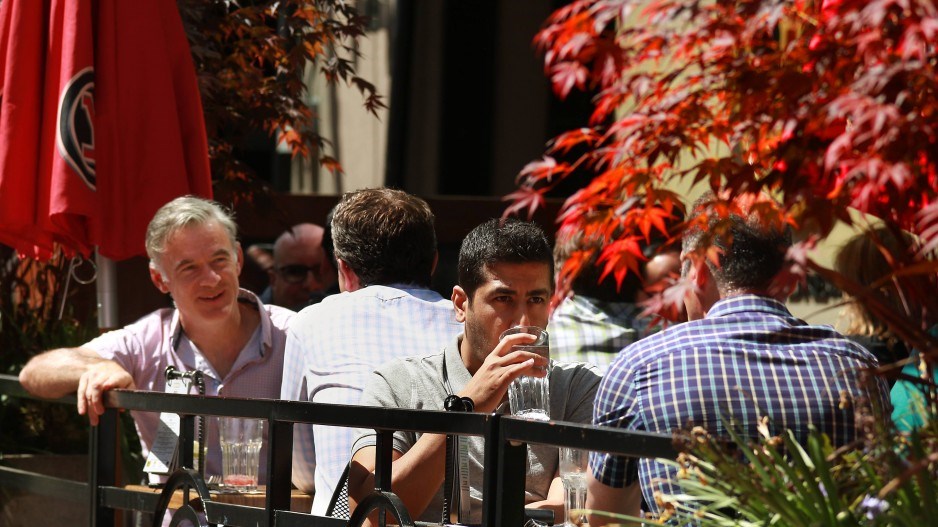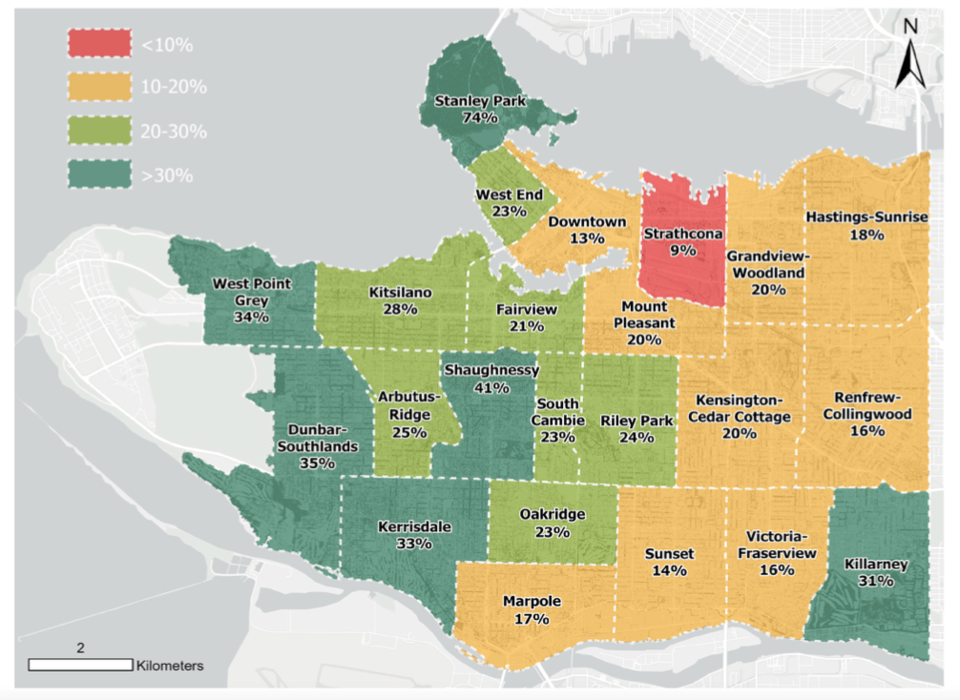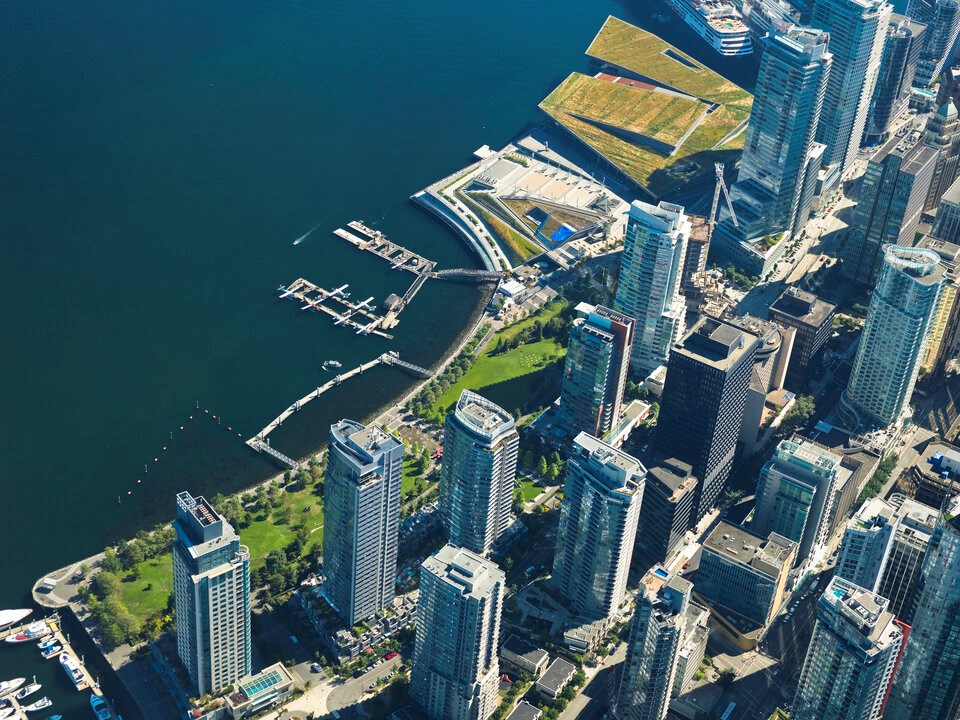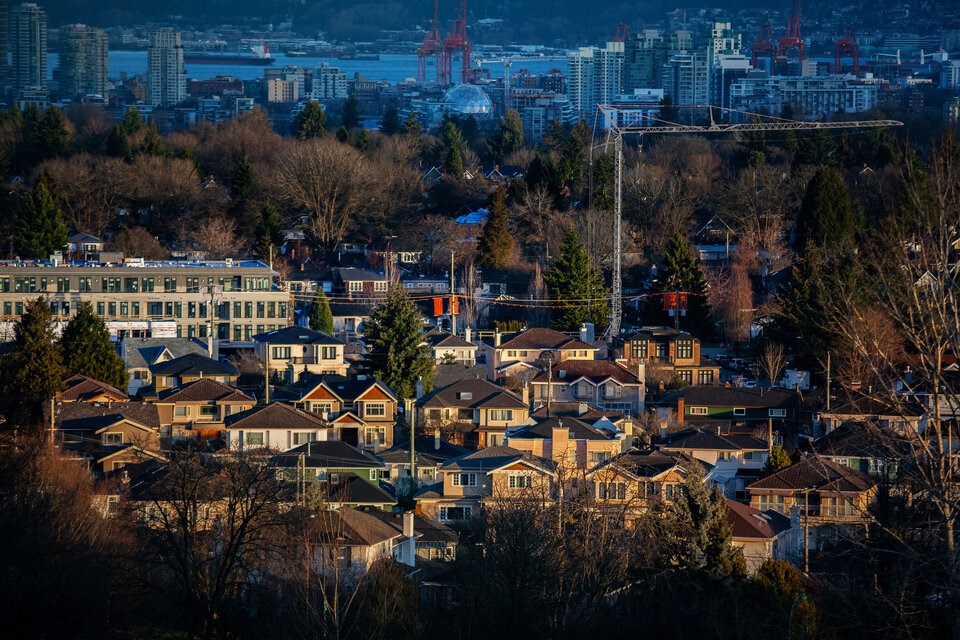How much shade is too much shade?
In B.C.’s warming cities, it’s a question increasingly pushing city planners to rethink what building developments should get approved, and which should be reworked to avoid casting a shadow on a nearby public space.
Brent Toderian, a prominent urban-planning advisor who previously served as Vancouver’s chief planner, said that for decades, cities across Canada have prioritized sunlight over almost everything else.
That might have made sense a decade ago when B.C.'s coastal cities saw gloomy, wet skies as the biggest damper on public spaces. But three years after a heat wave killed 619 people across the province, expectations have changed, and Toderian says city planners have failed to respond fast enough to the threat of deadly heat.
“They've been choosing sunlight over shade,” he said. “It’s been treated as almost an absolute rule.”
“And we can't afford to keep doing that.”
Since leaving the City of Vancouver, Toderian has advised hundreds of other cities around the world.
A decade ago, he said he championed the protection of sunlight in public spaces. In the years since, Toderian says he has observed how cities in Australia shade their sidewalks in the same way Vancouver uses glass panels to shield pedestrians from the rain. That has changed his perspective.
“Passive solar shading, active solar shading, natural ventilation, etc. It's just part of their architectural knowledge. And I think we are colossally bad at that here in North America,” he said.
“We have become entirely lazy and dependent on the assumption of air conditioning.”
The case for sunlight
With less than 2,000 hours of bright sunlight annually, winters in Metro Vancouver's cities can get dreary fast.
But according to Jason Olinek, director of development planning for the City of Vancouver, maximizing solar exposure is especially important in the spring and fall, when people tend to move to sunny places to socialize.
“It helps with, for example, patios during patio season,” he said.
Sun at that time also benefits people’s mental health, and Olinek says it’s “critical” urban trees, plants and grasses get sun during intermittent rainy seasons.

Historically, Vancouver has had more than a dozen ways to regulate how much shadow a building can cast on the surrounding area. In July, Olinek and his colleagues got approval from council to move to consolidate those rules into a municipal-wide approach that would affect 85 per cent of the city outside of downtown.
“What this does is it prioritizes publicly accessible, open spaces as the areas that we're going to design to minimize the amount of new shadowing,” said Olinek.
“It's a balance between development and minimizing shadow.”
Under the City of Victoria's policy and design guidelines, an applicant looking to build downtown “may be required” to submit a shadow analysis that shows their proposal can maintain appropriate levels of sunlight on a nearby sidewalk or public open space, said city spokesperson Colleen Mycroft.
Mycroft said Victoria is in the process of updating its Official Community Plan, and “there are situations where shade is encouraged.”
Cities prioritizing natural shade
Buildings play a role in providing shade, acknowledged the spokesperson for B.C.'s capital and sunniest city. But building a healthy, mature tree canopy in Victoria is being prioritized — both to provide shade in the heat and increase light during the winter, Mycroft said.
“At this time, there aren’t any plans to change this approach,” said the spokesperson.
In Vancouver, Olinek said that his department also works to minimize building shadow while prioritizing the creation of tree shade.
“What we found in our research is that the shadows that you're looking for that help control overheating, help with parks and make better spaces, those come from things like trees and structures in park spaces, not from buildings,” he said.
The focus on planting trees in Vancouver has yielded some positive results in a Metro region currently facing an overall decline in its urban forests. A recent report commissioned by the city found Vancouver’s tree canopy cover increased four per cent over the past decade.
Despite the gains, some Vancouver city blocks saw a net loss in tree canopy cover between 2018 and 2022, an elimination of natural shade partly the result of new developments removing trees and not being able to replace the lost canopy, the report said.
Big neighbourhood shade gaps also remain. Some of Vancouver’s wealthier west side neighbourhoods have tree canopies double to four times higher than several of the less affluent southern and eastern reaches of the city, the report found.

Are incremental changes good enough?
Olinek said the City of Vancouver is considering how to make incremental improvements that would balance the benefits of solar exposure with the cooling effects of building shade.
“The bigger strategy will include, and absolutely will take into account climate change and ways buildings can contribute to making great public spaces, both in the hot summer months and in the swing season,” he said.
“We do acknowledge that the way we treat summers here, they're becoming warmer, they're becoming hotter, and yes, the built environment has a significant role in impacting that, and buildings are part of that.”
But for Toderian, planners in many Canadian cities have been slow to advance urban design priorities that treat urban heating as a question of life and death.

Toderian said the idea of relying on trees to shade public spaces is rooted in evidence. Sitting in the shade of a tree tends to be more comfortable and more attractive. Deciduous trees can also offer more flexible shade — they let sunlight in during the winter months when their leaves fall, while growing them back in the spring to protect residents from summer heat.
“Where the ideology comes in is the overstatement that says that kind of natural shade is good and the artificial shade from a building is automatically bad in a heating city with many other public interests at play,” said Toderian.
More worrying, said the planning advisor, is the tendency among professionals like himself to prioritize sun and minimize shadow over every other public interest. In the midst of a climate emergency and housing crisis, Toderian said a better balance needs to be found.
“I think we need to realize that although we haven't considered ourselves to be one of the hot parts of the world, like Australia or the Middle East, we are getting hotter and that won't stop. And the circumstances are getting deadlier, and that won't stop,” he said.
“We need a fundamentally different conversation, a fundamentally different perspective and a fundamentally different approach to how we deal with shade and shadow.”
With files from Mike Howell




